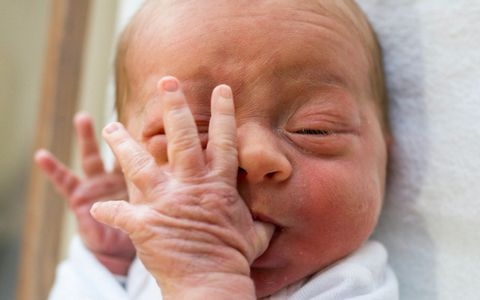profile/93871595323739410.jpg
Emmaximus123
Doctors Exodus Looms As International Flights Resume This Week
A large number of doctors are set to exit Nigeria once the ban on international flights is lifted this week, The PUNCH has learnt.This is just as The PUNCH observed from data provided by the United Kingdom’s Medical Council that the number of Nigerian doctors migrating to the UK increased by almost 100 between July and August despite the restriction on international flights.Recall that the Nigeria Immigration Service had in July prevented 58 Nigerian doctors from migrating to the UK because they didn’t have visas.It was, however, learnt that following the re-opening of the British High Commission a month ago, many of these doctors had obtained visas and had left even though the restriction on international flights had not been lifted.International flights will resume in the country on Saturday.The UK recently introduced a ‘Health and Care Visa’ policy, which aims to make it cheaper, quicker and easier for healthcare professionals to migrate to the UK.“I cannot say for sure how many of us have left but I am currently in the UK and many of us who were turned back that day have also departed Nigeria,†one of the 58 doctors told The PUNCH.The 58 Nigerian doctors, who were prevented by immigration from travelling to the UK were expected to earn between £51,384 (N25.1m) and £98,112 (N47.9m) per year depending on the experience they have, according to NES Health Care, a UK-based firm that helps over 150 private hospitals to recruit doctors from all over the world.Other destinations of choice include Canada, Saudi Arabia, Qatar, Australia and the United States which recently approvedSpeaking with our correspondent, the First Vice-President, National Association of Resident Doctors, Dr. Julian Ojebo, said 4,000 doctors might leave Nigeria between August and December.He said the poor treatment of doctors and the hostile working environment had made migration almost inevitable.Ojebo said, “One of the anaesthetists involved in transplant in Aminu Kano Teaching Hospital has relocated to Saudi Arabia. One of the best brains in Irrua Specialist Teaching Hospital has been offered a job for $10,000 in Saudi Arabia. He is leaving immediately after the lockdown.“A lot of resident doctors are leaving. They have all got jobs in Saudi. The only thing stopping them is the COVID-19 and the flight ban… We are going to have over 4,000 doctors leaving between now and December.“Out of the 33,000 registered doctors in Nigeria, the ones we have practising in Nigeria are less than 20,000. Over 13,000 are all around the world. Our problem is not education because when we go to saner climes we adapt so well and even do better than those who were trained abroad.â€Ojebo said the condition in Nigeria had deteriorated to the extent that doctors had begun migrating to even poorer countries because they pay physicians better and invest more in their health sector.“Let me shock you Nigerian doctors go to Namibia, The Gambia and even Somalia. I have a classmate who is currently working in Somalia,†he said.He said there was a need for the government to invest in the health sector.Ojebo said a lot of the medical facilities being set up to tackle COVID-19 were makeshift.He added, “Nigeria post-COVID does not know how to manage any other infectious disease should it come again. All we have are tents in Lagos and Abuja. Why are we not saying we want to build an infectious disease hospital in each geopolitical zone in case of a pandemic or epidemic in the future?“Why can’t we build hospitals that will do transplants in every geopolitical zone? Aminu Kano does transplants especially liver and kidney. Why can’t they fund it? LASUTH does a lot of cardiac procedures. Why are they not putting money in LASUTH?â€The Deputy Director, Human Resources at the Federal Ministry of Health, Shakuri Kadiri, had revealed at the launch of the Nigeria Health Workforce Country profile in March that the Nigerian health sector recorded an increase in the number of doctors seeking migration from 656 in 2014 to 1551 in 2018.
profile/93871595323739410.jpg
Emmaximus123
20 Unusual Things That Will Happen To Newborn After Birth
It has to be one of the most exciting moments in a mom and dad's life. Meeting the newborn baby is such a special time. However, one thing that comes with being a new parent is the constant worry. Whatever happens to our babies, we worry whether they are alright and if we are doing the right thing.When the baby is born, there are a number of things that will happen to the baby that might seem odd or alarming. Doctors and nurses work hard to make sure that the baby is healthy and that there is nothing they need to do to meet the baby’s needs.While parents just want to hold their gorgeous bundle, it may be frustrating to watch medical staff work their magic on our newborn son or daughter. However, there is nothing to worry about with the procedures, and most babies are absolutely fine. If there is any cause for concern, in a home birth or hospital delivery, midwives and doctors will do all that is necessary to ensure that baby is in the best health possible. Then all we have to do is get some rest and enjoy being parents.20The Baby Will Cry For Attention
Babies cry when they are born until they are reunited with their mothers. Not all babies will cry straight away if they feel the presence of their mother immediately. It is nature’s way of making sure that the baby does not get ignored and can be lifesaving in extreme circumstances.It may have been designed to be as loud and irritating as possible to ensure that the baby gets the attention it needs when it is first born. Once contact with the mother has been established, this crying should cease, and they will sleep. Of course, they may also be bruised and traumatized after a difficult birth, which will also cause them to cry.19Clamped And Cut
![]()
ab35034.jpg
18Covered In White Stuff
When a baby is in the amniotic sac it is surrounded by fluid, and the body is protected from this water by a thick, white substance called vernix caseosa. In some babies, this white protective substance is still present and will be wiped off by a nurse and washed off completely during the first bath.Not only has it protected the baby in the womb, but it also helps the baby to slide out of the birth canal. It has helped to keep the baby warm in the womb as well. The vernix has also covered the baby’s ears in the womb, protecting it against loud noises, according to Parents.com.17Mucus In The Mouth And Nose
As soon as the baby arrives, a doctor will remove any mucus or fluid from the baby’s nose and mouth using a suction bulb. This may have happened during delivery depending on the process of birth.It is important to clear mucus from the baby’s mouth and nose to allow successful breathing and to alleviate discomfort for the baby. It is also necessary for efficient feeding. Babies have no way of clearing this themselves, so it is performed by a health professional as soon as the baby is born.Babies can retain mucus for some time after birth and saline drops can be administered to soften this. A doctor can advise parents on how to administer the drops and what to watch for.16Some Babies Need Help Breathing
Some babies need a little kick start to get their breathing going, and a doctor will take the baby away to give it some oxygen to make sure the baby does okay while it get used to using its lungs. Once the baby is breathing normally it will be returned to the mother. The old-fashioned method of slapping the baby is no longer practiced, but the aim of this action was to stimulate the baby to take a large breath.First breaths are important for the baby as it has been submerged in amniotic fluid for nine months and there could be some fluid left in the baby’s lungs.15Vitamin K Is Required
Parents will be offered the chance for their baby to have a vitamin K injection soon after birth. This is given in the top of the leg and is recommended for the baby as they have very low levels of vitamin K in their bodies at birth.Vitamin K is required in the body to help form blood clots. Having the shot can prevent a serious bleeding illness in a baby. While it is obviously important, the shot will probably cause the baby a little pain. It can be delayed for a little while if the parent chooses. The vitamin can be given orally in drops, but this is a course of treatment rather than a one-off jab.14The Baby Might Need A Back Rub
![]()
Beautiful, happy, young mother introducing her Big Brother toddler to the new baby in the hospital. Infant in blanket
13Get The Measuring Tape!
Soon after birth the baby’s length, weight, and head circumference will be measured and recorded by a nurse or midwife. It is important to weigh the baby as it gives a good indication of how healthy the baby is. Smaller babies are more likely to have problems.Length and circumference of the head will also be measured, and these are also indicators of the baby’s wellbeing.A normal head circumference is between 13-14 inches according to Slideshare.net. If a baby has been delivered vaginally, the head may have been squashed slightly and will realign after a couple of days.From head to heel the average length of a baby is 17-21 inches, and girls are generally slightly shorter than boys.12Needs To Score At Least A 7
The Apgar test is performed by doctors just after birth. It is a check for vital signs and responsiveness. It records five responses in the baby, muscle tone and activity, heart rate, color, and grimace reflex response according to Kidshealth.The doctor will record a score of 0-2 for each response. The results of each test are added together to give the Apgar score. The test is then repeated after five minutes. If the baby receives a score of between seven and ten this is considered normal and if it is any lower, the baby may need help with breathing.11The Baby's First Bracelet
A small identification bracelet will be placed on your baby soon after birth, as will the mother and partner. This will be done soon after birth and certainly if the baby is to be taken out of the room for any reason. There will also be an identification footprint taken of the baby. Some hospitals will also take a second footprint for the parents to keep, so ask if this is something you would like to happen.The ID bracelet or foot tag will have details of the baby’s name, date and time of birth and the doctor or midwife who delivered it.10The Baby Might Not Be Hungry
Babies are usually placed directly onto the mother’s skin as soon as possible after birth. If the baby is alert and awake this is a good time to start to breastfeed. In fact, it is recommended that the baby is given the skin to skin contact with the mother until feeding is established.Babies may not want to feed straight away. They may just nuzzle and lick the nipple to start with. Some feed straight away. Some babies are very tired after delivery and just want to sleep. Ask for advice or help from the doctor or midwife if you are worried about feeding the baby or just want some tips on how to do it.9Mom Will Need Towels
Babies have been submerged in liquid for a long time and there are a lot of bodily fluids involved in the birth process. Your soggy newborn will need some drying with towels and blankets. This is important to rid the baby of unnecessary moisture, but also to keep the baby warm. Drying the baby will help to warm him up, as will direct contact with his mother’s skin.There may still be some of the waterproof vernix on the baby’s skin that has protected him from the moisture in the womb so the baby may need this to be removed. Not all babies are born with the sticky white substance on them as it comes off during the birth process.8 Eye Drops Will Be Necessary
A baby is given eye drops or ointment soon after birth. This is to prevent infections from forming that might have been contracted during the birth. Babies are given this treatment in case a sexually transmitted illness is present in the mother such as gonorrhea or chlamydia. If left untreated, it can cause blindness. However, as the treatments can cause the baby’s vision to be blurred, the treatment can be delayed until you have held and bonded with the baby, according to Women’s Health.This treatment is required by state law, and some women question why the baby would be treated when they do not have an STI. However, there are often no symptoms of these illnesses and the treatment does no harm to the baby.7To Hospital Bath OR Not?
Once the baby has reached and maintained a healthy body temperature, a nurse will give the baby a sponge bath just to rid the baby of any of the matter left after the birth. The hair may also be washed if necessary. This is often done in a separate room so that the baby can be warmed up under a heater after the bath. If you prefer the baby to be washed in the delivery room, this can be arranged and the baby can be placed on the mother’s skin to warm up.There is quite a lot of mess during the birth process and the baby may need to be cleaned of blood, vernix and other grunge.6The Hep B Vaccine
![]()
Nurse giving newborn baby Rotavirus vaccine immunisation. It protects children from rotaviruses, which are the leading cause of severe diarrhea among infants and young children
5The Baby Needs Warming Up
![]()
via: gehealthcare.com
4Might Look A Bit Blue
Newborn babies vary in color depending on their condition and of course, their ethnicity. They can look purple or dark red or slightly blue. Their color will improve after a few minutes once they have established a regular breathing pattern and oxygen is flowing through their bodies.Extremities such as hands and feet can stay blue or purple for a few days. This is completely normal as the baby has an underdeveloped circulatory system and it will take some time for them to stabilize in color. The baby may also appear a little yellow, which is as a result of the baby trying to get rid of extra blood cells. If the baby is jaundiced, treatment will be offered by the care provider and monitored.3The Newborn Gaze
Although a baby has just spent hours trying to get out into the world, some babies are born amazingly awake. Everything is brand new and as long as the baby is comfortable and warm, he may just gaze around and take in the new surroundings.This is a lovely time to bond with the baby and get to know him. His parents’ faces will be fascinating to him and as he recognizes mom’s smell from being inside the womb, he will feel reassured and secure having skin contact with mom and gazing up at her face and getting to know her.2The Heel Prick Test
Doctors will take a small sample of blood from the baby’s heel soon after birth. This blood sample is used to test for serious conditions that may not be immediately obvious when looking at the baby. Some problems can be detected and diagnosed, which might cause serious implications for the baby if not spotted straight away. These include organ failure, developmental difficulties, and blindness or even death.Which illnesses are tested for varies from state to state and this information is available from state health departments? However, most states test for around thirty illnesses. However, every state tests for sickle cell, hypothyroidism, phenylketonuria, and galactosemia.1Can't Keep Their Eyes Opened
Newborn babies require a great deal of sleep. After the effort of being born, the baby will be very tired and typically sleep for some hours after the delivery. The sleep is needed to help the baby to grow, as well as to recover from the journey into the world.After birth, don’t be surprised if the baby nods off straight after the birth. Babies can fall asleep anywhere and nestled on his mother’s chest will be the snuggliest, most comforting place in the world. So, he will feel relaxed and be very likely to take a first nap. 


